The White Princess Plant, royalty as it may sound, is a plant from the species of Philodendron, which are majority used as indoor plants. The name gives you an idea of how it looks but once you see it in person, you may still be surprised by its elegance.
White Princess Plant is not your ordinary plant. It is a gorgeous decor and a functional air purifier too. And above all, it is easy to maintain. How great is that for an indoor plant? With ample care, you’ll surely be able to enjoy its admirable beauty for years. If you want to find out more, let’s continue discussing.
In this guide, we’ll cover everything you need to know to grow and care for your White Princess Plant, including its ideal growing conditions, watering needs, and propagation methods.
What Is A White Princess Plant
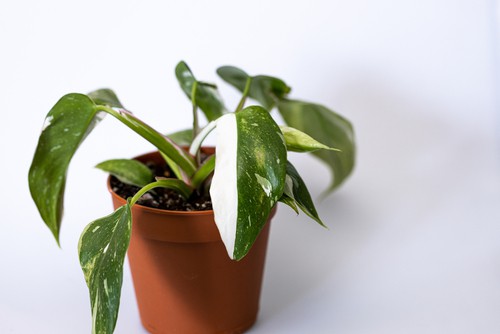
Out of all Philodendrons, the White Princess Plant is one of the most attractive. The gorgeous leaves are splashed generously across the green pigment with a bright white hue. One main reason for such beauty is due to being a hybrid plant, similar to the Philodendron White Knight.
The difference is in the stem coloration wherein the White Knight has a dark pink and purple stem. The White Princess Plant is a slow grower type of indoor plant. But as it grows, the leaves become larger and more eye-catching.
This plant is perfect for decorations inside the house. You can have it potted or hanged since it has both aerial and underground roots. Furthermore, like most of the Philodendrons, it can purify the air to a certain degree.
Unhealthy contaminants in the air, especially in urban or near industrial places, can be absorbed. Being able to grow on compact-size containers makes it convenient for indoor growing. Moreover, the White Princess Plant usually lacks fragrance and sometimes, it can become a deal-breaker for others.
Fortunately, its beauty alone is enough to make plant enthusiasts crave it. Add the factor of being rare yet mysterious and you get an expensive plant that can be worthy of investment. That’s only if it’s healthy.
Benefits of White Princess Plant as an Air Purifier
The White Princess Plant not only adds beauty to your indoor space but also serves as a functional air purifier. It has the ability to absorb and remove unhealthy contaminants from the air, making it ideal for urban or industrial areas where air quality may be compromised.
The plant’s large leaves help in the process of air purification by trapping and filtering pollutants. This can greatly contribute to improving the overall air quality in your home or office environment. By having a White Princess Plant, you can create a healthier and more pleasant living space.
Origin And Classification
The origins of the White Princess Plant remain a mystery. Even though it is a hybrid, the plants used to achieve a genetic marvel are still debatable. However, the Philodendron species are known to originate in Colombia, a tropical country. Philodendrons, including the White Princess Plant, come from the Araceae plant family.
While the exact genetic origins of the White Princess Plant remain uncertain, it is believed to be a hybrid of Philodendron species. The process of hybridization involves crossing different plants to create new varieties with desirable traits. In the case of the White Princess Plant, its attractive leaves and unique coloration are the result of such hybridization.
Although the specific parent plants used to create the hybrid are still a topic of debate, it is known that Philodendrons, including the White Princess Plant, belong to the Araceae plant family and are native to tropical regions like Colombia.
Understanding the genetic background of this plant adds to its allure and intrigue, making it a sought-after addition to any plant collection.
Features Of White Princess Plant
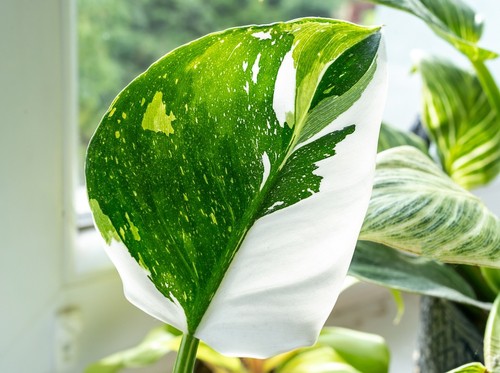
The most striking feature of the White Princess Plant is its leaves. Such coloration can be achieved as the plant matures. That feature is the basis of most growers on how much value they can assign to the plant. Let’s explore more about this plant’s physical traits.
1. Height
Although the White Princess Plant is an indoor plant, it is fairly large. It can grow up to a height of 3 feet and can spread up to 2 feet wide. The growth is very slow though and it usually takes 10 years to achieve the maximum size. Compared to other Philodendrons, the White Princess Plant is self-supporting, which means there is no need for a trellis to remain upright.
2. Flowers & Leaves
Flowering for White Princess Plant only starts when it achieves full maturity. Even though it can take at least a decade, the resulting flowers will look very appealing with their pink hues. However, the non-flowering White Princess Plant is very common and therefore, you don’t have to expect much about it.
3. Foliage & Stem
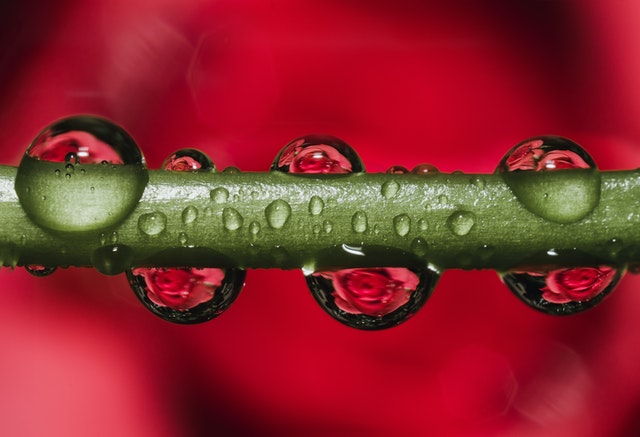
Even though your White Princess Plant doesn’t produce flowers, the foliage alone is enough to make this plant highly appreciated. The leaves, which can grow 20 cm long, have a glossy texture splashed with generous amounts of bright white. Sometimes, there can be a few pink patches too. The stem can also have the same colorization pattern.
4. Evergreen
The White Princess Plant can stay fresh and glossy no matter what season it may be. The evergreen nature will last long with just minimal care and attention.
Basic Care Of White Princess Plant
The basic care for White Princess Plant is straightforward. It only needs enough sunlight, water and fertilizer under normal room conditions. Anything that you lack or do in excess can result in damage.
1. Size & Growth
The White Princess Plant can become a large indoor plant, but it will take a lot of years to achieve that. If you want to accelerate its growth, attaining all ideal values on all growing parameters is a must. Do also note that the White Princess Plant is more of a self-supported plant rather than being a sprawling vine.
2. Light Requirements
The ideal light requirement for the White Princess Plant is indirect bright sunlight, similar to the scene inside the thick rainforests of South America. In the absence of sunlight due to having enclosed rooms, you need a light source that can provide around 10,000 to 20,000 lux.
3. Water Requirements
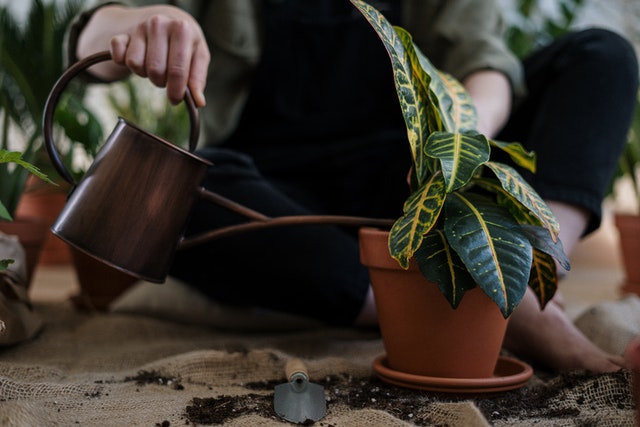
As a tropical plant, the White Princess Plant needs water but the demand for it is not that high. You only need to water the plant every 7 to 10 days or when the top half of the soil isn’t moist anymore. Do remember not to overwater to avoid root rot.
4. Soil Requirements
The White Princess Plant needs rich and quick-draining soil so that it will not retain too much moisture. For best results, make sure the pH level is around 5.6 to 7. You can achieve this by using a combination of compost filled with perlite, sphagnum moss and peat moss.
5. Sunlight Requirements
As already mentioned, the White Princess Plant needs only enough amount of sunlight. Being exposed directly can cause the leaves to wilt. Remember that this plant’s best asset is its beautiful foliage. If you have large windows where sunlight can directly pass through, put some curtains to provide shade for the plant.
6. Temperature & Humidity
The ideal temperature for the White Princess Plant is from 64 to 77 degrees Fahrenheit. This means that the plant can prosper under normal room situations, even if you have an air conditioner.
On the other hand, the ideal level of humidity needed ranges from 60 percent to 80 percent. If it becomes difficult to achieve that normally, using a humidifier or applying the pebble-tray method can be very beneficial.
7. Drought & Disease Resistance
Like most Philodendrons, the White Princess Plant cannot survive a drought. It needs a certain level of moisture since it is originally a water-loving plant.
However, too much water can lead to root rot. Speaking of disease, the common source of most diseases is the pest. It can be aphids or mealybugs. Pest can be easily taken care of if the plant is regularly monitored.
8. Toxicity
It is not uncommon for Philodendrons to be a toxic plant. Yes, they are used as indoor plants, just like the White Princess Plant. But the toxicity is not fatal enough to cause death.
Only through prolonged exposure or consumption can the plant be of great harm to humans and pets. If a human or pet somehow fell victim to its toxicity, then medical attention is urgent.
9. Fertilizing
During the growing season, which ranges from spring to summer, the White Princess Plant must be fertilized every month. If it is autumn or winter, the plant needs to be fertilized once every 2 months. The best fertilizer is in liquid form which can be easily diluted in water to be applied to the soil. Moreover, the ratio must be an even 10-10-10.
10. Potting & Repotting
Repotting White Princess Plant must be done every 12 to 18 months. This encourages more increase in size. However, if you find that your plant’s new leaves are getting smaller, then you need to repot quickly.
Do not provide a pot that is much larger than needed to be. On the bright side, there is no need for a particular potting mix since White Princess Plant has similar soil requirements to any other Philodendron.
11. Pruning Requirements

Pruning White Princess Plant is only done to remove damaged or dead leaves. You can perform that monthly. Because it is a slow-growing plant, there is no need to trim what it already has. Do not forget to sterilize the sharp object used for pruning first to prevent the plant from catching diseases.
12. Cultivating a White Princess Plant: Tips for Success
To ensure the successful growth of your White Princess Plant, it’s essential to provide it with the right conditions. Here are some additional tips to help you cultivate a healthy and thriving plant:
- Temperature Tolerance: While the White Princess Plant prefers temperatures between 64 to 77 degrees Fahrenheit, it can tolerate slightly lower or higher temperatures. Avoid exposing the plant to extreme temperature fluctuations, as it may negatively impact its growth.
- Pruning Techniques: In addition to removing damaged or dead leaves, periodic pruning can help maintain the plant’s shape and encourage new growth. Sterilize your pruning tools before each use to prevent the spread of diseases.
- Variegation Enhancement: Bright, indirect light is key to encouraging variegation in the White Princess Plant. Ensure that your plant receives adequate light to maintain its attractive white foliage. Avoid excessive exposure to direct sunlight, as it can cause the leaves to turn yellow.
- Soil Moisture Control: While the White Princess Plant enjoys consistently moist soil, overwatering can lead to root rot. Allow the top inch of the soil to dry out before watering again. Use well-draining soil and ensure proper drainage in the pot to prevent waterlogging.
How To Propagate White Princess Plant
Since White Princess Plant doesn’t have any seeds, the easiest way to propagate them is through cuttings. We will learn how to propagate such a rare indoor plant.
- Step 1: Stem Cutting
Choose a stem that measures at least 3 inches in length, with 2 or 3 leaf nodes and has at least 1 leaf. Then, cut the chosen stem under the nearest node.
- Step 2: Pot Growing
Select an appropriate-sized pot. Fill it halfway with either water or potting medium such as perlite or peat. Place the cutting in it, submerged.
- Step 3: Sunlight Positioning
Position the pot wherein there is indirect sunlight. Also, make sure the place is humid such as the laundry room or the bathroom. You can cover the pot with clear plastic.
- Step 4: Monitoring
Monitor the pot every week. Around 4 to 6 weeks, the roots might appear from the cutting. Inspect the cutting inside the pot for roots.
- Step 5: Potting
Once it is confirmed that roots are growing, make sure they are a few inches longer. Only then that cutting can be taken out and transferred to a larger fixed pot for further growing. Take note of the care requirements.
Common Problems In Caring For White Princess Plant
Like any other indoor plant, the White Princess Plant can experience problems too. The plant can be vulnerable to diseases and unwanted ‘visitors.’ Here are a few of them and how to deal with each of them.
1. Pests
The White Princess Plant can be invaded by pests. Even though it is toxic to humans and pets, it can receive a considerable amount of damage from these invaders.
These pests are mealybugs, aphids, scales and spider mites. Although they can be easily plucked if monitored, you can further prevent them from invading again with Neem oil.
2. Overwater / Too Much Moisture
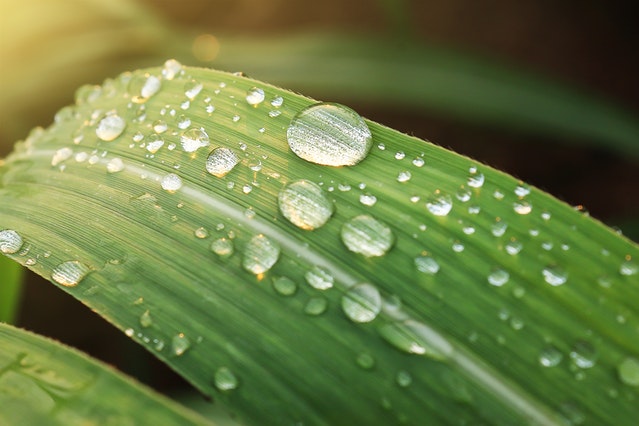
When you overwater the White Princess Plant, root rot can occur. Also, too much moisture can make the leaves turn dark with edges that become yellow. This is called ‘bacterial leaf spot’.
The only way to prevent these diseases is to remove the infected part of the plant and repot the remnants into newer soil.
Also read: Anthurium Silver Blush Plant, Grow & Care Guide 2022
White Princess Plant’s Role in Indoor Decor
The White Princess Plant is an excellent choice for indoor decorations. Its elegant and eye-catching leaves, splashed with bright white and occasional pink patches, add a touch of sophistication to any room. The plant’s self-supporting nature eliminates the need for a trellis, making it easy to incorporate into your indoor decor.
Whether you choose to pot it or hang it, the White Princess Plant will effortlessly enhance the aesthetic appeal of your living space. Its compact size and ability to grow well in containers make it a versatile option for various decorative arrangements. From modern to traditional interiors, this plant can complement a wide range of design styles.
White Princess Plant’s Role in Biodiversity Conservation

As a hybrid plant, the White Princess Plant contributes to the preservation of biodiversity. Hybridization allows for the creation of new plant varieties with distinct characteristics, increasing the diversity within the plant kingdom.
By cultivating and appreciating hybrid plants like the White Princess, we support the conservation of genetic diversity and promote the continuation of unique plant traits. This is especially important in the context of environmental challenges and the loss of natural habitats.
Including the White Princess Plant in your collection not only adds beauty to your surroundings but also plays a part in preserving the rich tapestry of plant life on our planet.
Conclusion
The White Princess Plant is such a gorgeous Philodendron. Although it can be rare and expensive, having one is worth it. The basic care and propagation are relatively easy and affordable. So, if you ever want to invest in indoor plants for decoration and air purifiers, choosing the White Princess Plant is a no-brainer.
The White Princess Plant can be purchased on online stores such as Amazon and Etsy. The usual minimum price is around $90 but commonly, it can go beyond $100.
Frequently Asked Questions
How do you encourage variegation in the White Princess?
The key to the White Princess Plant’s variegations is bright, indirect light. Too much exposure to light can turn the gorgeous leaves of your plant into yellow. On the other hand, lacking enough light exposure can cause thin gangly appendages.
Is White Princess a fast grower?
White Princess Plants are very slow growers. Even if the upbringing is healthy, it can take at least 10 years for the plants to mature. To provide an optimum growing environment, you need to meet the basic care requirements as consistently as possible.
Do White Princess Philodendrons turn pink?
A White Princess Plant is noticeable due to the white colorization on the foliage. Given that the plant is grown under healthy circumstances, it might have some touches of pink around.
However, do not mistake the White Princess Plant with the Philodendron Pink Princess. The latter has pink hues dominating the leaves instead of white.

Hey, I’m Lisa and I’ve been an avid gardener for over 30 years. I love writing, talking and living in the garden! Feel free to connect with me on my socials below

![White Princess Plant, Grow & Care Guide [year]](https://gardeningfaqs.com/wp-content/uploads/2022/07/shutterstock_2104522187-1024x683.jpg)